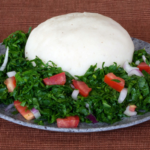When it comes to Nigerian cuisine, Buka Stew stands out as a hearty and flavorful delight that has captured the palates of food enthusiasts both within Nigeria and beyond. This traditional stew, also known as Obe Ata, is a staple in Nigerian households and local bukas (street-side restaurants). With its rich blend of aromatic spices, peppers, and various proteins, Buka Stew embodies the cultural diversity and culinary heritage of Nigeria. Let’s delve into the art of making Buka Stew and discover the flavors that make it a beloved dish.
Origins and Cultural Significance
Buka Stew has its origins in Nigerian cuisine, particularly among the Yoruba people of southwestern Nigeria. It is a dish deeply rooted in the culture and traditions of the region, often prepared in large quantities for communal gatherings, celebrations, and festive occasions.
Buka Stew holds cultural significance as a representation of hospitality, warmth, and togetherness. It is a dish that brings people together, as it is commonly shared among family and friends during meals. The flavors and aromas of Buka Stew evoke a sense of nostalgia and pride, reminding Nigerians of their culinary heritage and cultural identity.
Ingredients and Flavor Profile
At the heart of Buka Stew is the combination of tomatoes, onions, and peppers, creating a rich and vibrant base. Other key ingredients include assorted meats such as beef, goat, or offal, as well as fish or seafood. The choice of proteins varies depending on personal preferences and regional variations within Nigeria.
The stew is flavored with a variety of aromatic spices such as thyme, curry powder, bay leaves, and bouillon cubes, which enhance the depth of flavors. Palm oil is another essential ingredient that adds richness and a distinct red hue to the stew.
The flavor profile of Buka Stew is a harmonious blend of savory, tangy, and mildly spicy notes. The tomatoes and peppers provide a vibrant and tangy taste, while the combination of spices adds complexity and depth. The proteins, whether meat or fish, infuse the stew with their unique flavors and textures, creating a satisfying and well-rounded dish.
Preparation and Cooking Technique
The preparation of Buka Stew involves several steps to achieve its rich and flavorful profile. First, the proteins are cooked separately to ensure they are tender and flavorful. They are often simmered with a blend of spices and onions until they reach the desired level of doneness.
Next, the base of the stew is created by blending tomatoes, peppers, and onions into a smooth puree. The puree is then cooked in palm oil until it thickens and the flavors meld together. The cooked proteins are added to the base, and the stew is simmered to allow the flavors to meld and develop further.
The slow cooking process is crucial for the flavors to infuse and intensify, resulting in a deeply flavored and aromatic stew. The result is a hearty and comforting dish that showcases the culinary expertise and attention to detail in Nigerian cuisine.
Serving and Accompaniments
Buka Stew is commonly served with a variety of side dishes such as rice, yam, plantains, or fufu (a staple food made from cassava, yam, or plantain). These accompaniments provide a satisfying base to soak up the flavorful stew and add a textural contrast to the dish.
To complement the flavors of Buka Stew, it is often served with garnishes such as chopped onions, fresh tomatoes, and a sprinkle of fresh herbs like parsley or cilantro. These additions add brightness and freshness to the dish, enhancing the overall dining experience.
Buka Stew is a testament to the rich flavors and cultural heritage of Nigerian cuisine. Its aromatic spices, tangy tomatoes, and tender proteins create a symphony of flavors that celebrate the diversity and culinary expertise of Nigeria. Whether enjoyed at a local buka or prepared at home, Buka Stew offers a hearty and delightful experience that brings people together and nourishes both the body and soul. So, embrace the art of making Buka Stew and savor the robust flavors of this beloved Nigerian dish.








